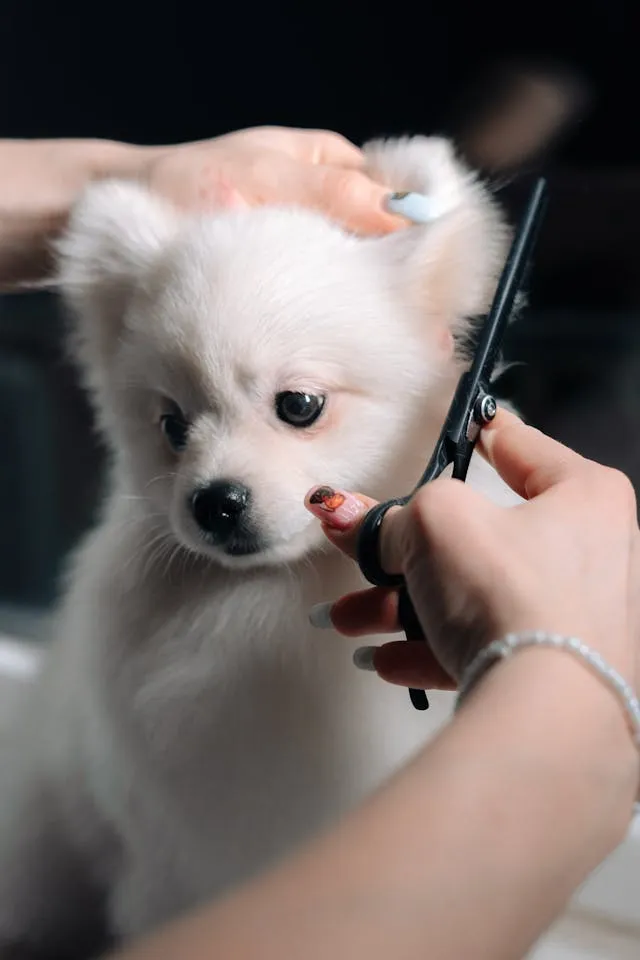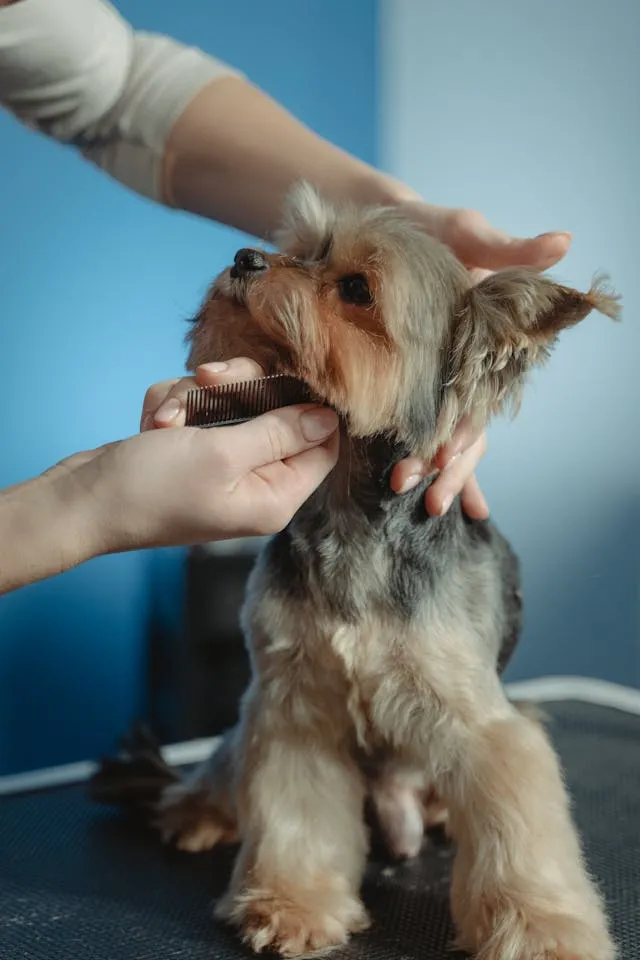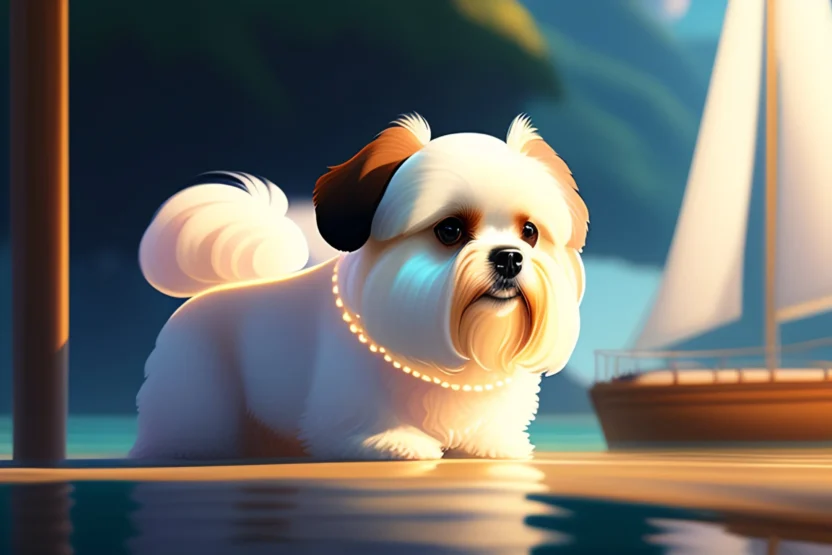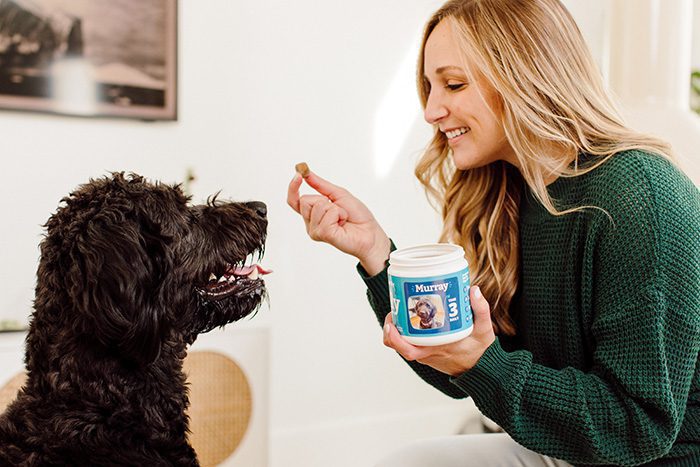Bringing a new puppy home is a joyous experience, but it also comes with responsibilities, including grooming! While that adorable fluffy coat might seem like it takes care of itself, puppy grooming is essential for their health and happiness. It’s more than just keeping them looking cute; it’s about building a positive relationship with grooming and ensuring their well-being from the start.
This comprehensive guide covers everything you need to know about puppy grooming, from why it’s important to how to make it a positive experience for both of you. Let’s get started!
Why is Puppy Grooming Important?
Puppy grooming isn’t just about aesthetics it plays a crucial role in their overall health and well-being. Here’s why:
- Health Benefits: Regular brushing prevents mats, which can lead to painful skin infections. It also helps remove dirt and debris. Nail trimming prevents painful breaks and ingrown nails. Dental care keeps their teeth clean and their breath fresh, which can also protect against heart and kidney damage.
- Emotional and Social Benefits: When introduced properly, grooming can be a calming and bonding experience for you and your puppy. It’s also a great way to socialize them and get them used to being handled.
- Early Detection of Potential Issues: Grooming allows you to closely examine your puppy’s skin, ears, teeth, and paws. You can spot any abnormalities early on, such as lumps, bumps, or parasites, and seek veterinary attention if needed.

When to Start Grooming Your Puppy
The sooner, the better! You can start getting your puppy used to being touched and handled as soon as you bring them home. Here’s a general timeline:
- First Vet Visits and Vaccinations: Your puppy will need their initial vaccinations before they can be safely exposed to other dogs. Once they’ve received their shots, they can start going to a professional groomer.
- Ideal Age for First Professional Grooming: Experts recommend taking your puppy to a groomer for the first time between 12 and 14 weeks of age. This early introduction helps them develop positive associations with grooming from a young age.
- Breed-Specific Considerations: Puppies with long hair, like Maltese, Yorkies, Poodles, and Doodles, might need professional grooming even earlier to prevent matting.
How to Introduce Your Puppy to Grooming
Making grooming a positive experience for your puppy is key to their lifelong well-being. Here’s how to make it a fun part of their routine:
- Positive Reinforcement: Use plenty of praise, treats, and toys to reward your puppy for good behavior during grooming sessions.
- Gradual Desensitization to Handling: Start by gently touching and handling your puppy all over their body. Focus on areas they might be sensitive to, like their face, paws, ears, and tail. Gradually introduce grooming tools like brushes, combs, nail clippers, and dryers while offering treats and reassurance.
- Face Hold: Practice the “face hold” technique by placing your hand under their chin and gently holding their fur. Reward them for staying still.
- Paw Hold: Get them used to having their paws touched by gently lifting each paw and playing with their toes and nails.
- Getting Comfortable with Tools and Noises: Introduce grooming tools and sounds gradually. Let your puppy sniff and investigate the brush, comb, nail clippers, and dryer while it’s off. Turn the dryer on at a distance and gradually move it closer as it becomes more comfortable.
- Introducing Bath Time: Make bath time fun by using lukewarm water, a gentle dog-specific shampoo, and lots of praise. You can even introduce bath toys to make it more enjoyable.
- Teaching Basic Commands: Teaching your puppy commands like “sit” and “stay” will make grooming sessions much easier. These commands help them stay in position and remain calm while being groomed.
Essential Puppy Grooming Tools
Having the right tools is essential for successful puppy grooming. Here are some must-haves:
- Brushes for Different Coat Types:
- Short-haired breeds: Use a brush with short bristles.
- Long-haired breeds: Use a brush with longer bristles.
- Double-coated breeds: Use a slicker brush and an undercoat rake to remove loose hair and prevent mats.
- Nail Clippers and Grinders: Choose clippers designed for different nail sizes or a grinder to smooth out sharp edges.
- Dog-Specific Shampoo and Conditioner: Use a gentle, pH-balanced shampoo and conditioner formulated for dogs. Avoid human shampoo, which can be harsh on their skin.
- Dog Toothpaste and Toothbrush: Opt for a dog-specific toothpaste that is safe to swallow and a toothbrush designed for their small mouths.
- Ear Cleaning Solution: Choose a non-irritating ear cleaning solution recommended by your veterinarian.
Step-by-Step Puppy Grooming Guide
Here’s a basic guide to grooming your puppy at home:
- Brushing and Combing: Brush your puppy’s coat regularly to remove loose hair, prevent mats, and distribute natural oils. The frequency depends on their coat type.
- Bathing: Bathe your puppy as needed, generally every 4-6 weeks or when they get dirty. Use lukewarm water and a gentle dog-specific shampoo.
- Nail Trimming: Trim your puppy’s nails every 2-4 weeks, or as needed, to prevent overgrowth. Be careful not to cut the quick, which is the pink part of the nail.
- Ear Cleaning: Clean your puppy’s ears weekly or as needed to remove wax and debris. Use a veterinarian-recommended ear-cleaning solution and cotton balls. Never insert Q-tips into their ear canal.
- Teeth Brushing: Ideally, brush your puppy’s teeth daily to maintain good oral hygiene. If daily brushing isn’t possible, aim for at least a few times a week.

Finding a Professional Groomer
While you can handle some basic grooming tasks at home, professional grooming is essential for maintaining your puppy’s overall health and appearance. Here’s what to consider when choosing a groomer:
- Importance of Professional Grooming: Professional groomers have the experience and expertise to handle more complex grooming tasks, such as haircuts, de-matting, and anal gland expression. They can also identify potential health issues that you might miss.
- What to Look for in a Groomer: Look for a groomer who is certified, experienced, and gentle. Ask for recommendations from your veterinarian or other dog owners. Make sure the grooming facility is clean, well-maintained, and has a positive atmosphere.
- Preparing for the First Grooming Appointment: Before the appointment, make sure your puppy is up-to-date on their vaccinations. Let the groomer know about any special needs or sensitivities your puppy might have.
Breed-Specific Grooming Tips
Different breeds have different grooming needs. Here are some tips for common breeds:
- Long-Haired Breeds: Breeds like Maltese, Yorkies, Poodles, and Doodles require frequent brushing to prevent mats. They might also need regular professional haircuts to maintain their coat’s length and shape.
- Double-Coated Breeds: Breeds like Chow Chows, Pomeranians, and Huskies have a dense undercoat that sheds heavily. They require regular brushing to remove loose hair and prevent matting.
- Other Breeds with Unique Grooming Needs: Some breeds, like bulldogs, have wrinkles that need to be cleaned regularly to prevent skin infections.
Common Puppy Grooming Challenges and Solutions
Puppy grooming isn’t always easy, but here are some common challenges and how to overcome them:
- Dealing with Fear and Anxiety: If your puppy is afraid of grooming, start slowly and use positive reinforcement. Desensitize them to each step gradually. If their fear is severe, consult with a veterinarian or a professional dog trainer who specializes in behavior modification.
- Addressing Matting: Regular brushing is crucial to prevent matting. If mats do occur, don’t try to remove them yourself, as this can be painful. Consult a professional groomer.
- Handling Difficult Dogs: If your puppy is particularly wriggly or resistant to grooming, consider using a grooming harness or loop to help keep them in place. You can also ask a friend or family member to help hold and comfort your puppy during grooming sessions.
Puppy Grooming FAQs
Here are answers to some frequently asked questions about puppy grooming:
- How often should I groom my puppy? The frequency of grooming depends on your puppy’s breed and coat type. Generally, aim for brushing at least a few times a week, nail trimming every 2-4 weeks, and bathing every 4-6 weeks.
- What is the typical cost of puppy grooming? Grooming costs vary depending on your location and the services provided. A basic bath and brush might cost around $40-$75, while a full-service groom, including a haircut, can cost more.
- Can I use a puppy grooming kit? Yes, puppy grooming kits can help maintain your puppy’s coat between professional grooming appointments. A basic kit should include a brush, nail clippers, a toothbrush, and dog toothpaste. Be extremely cautious when using scissors on your puppy. It’s generally best to leave haircuts to professional groomers to avoid the risk of injury.
- What are the signs my puppy needs professional grooming? If your puppy’s coat is matted, their nails are overgrown, or they have excessive dirt or debris in their ears, it’s time for a professional groomer.
Key Takeaways for Happy Puppy Grooming
Remember, patience, positive reinforcement, and the right tools are the keys to successful puppy grooming. By starting early, making it a positive experience, and seeking professional help when needed, you’ll set your puppy up for a lifetime of healthy and enjoyable grooming routines. Happy grooming!



